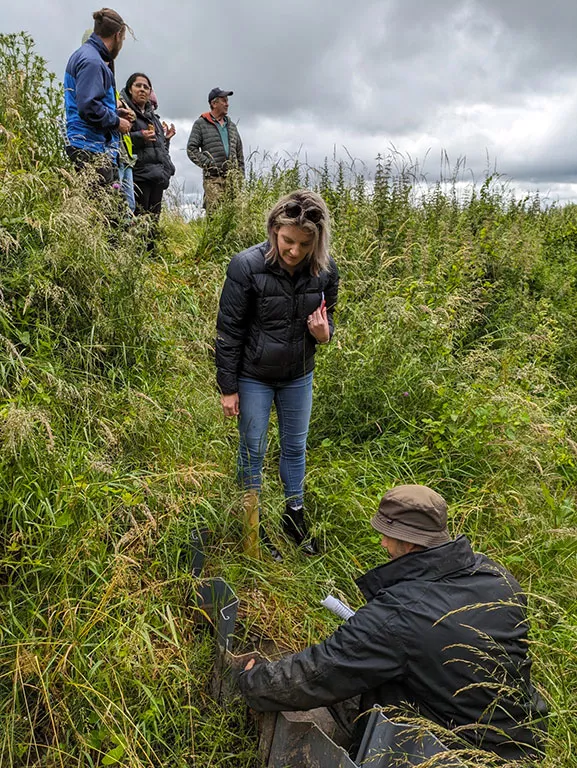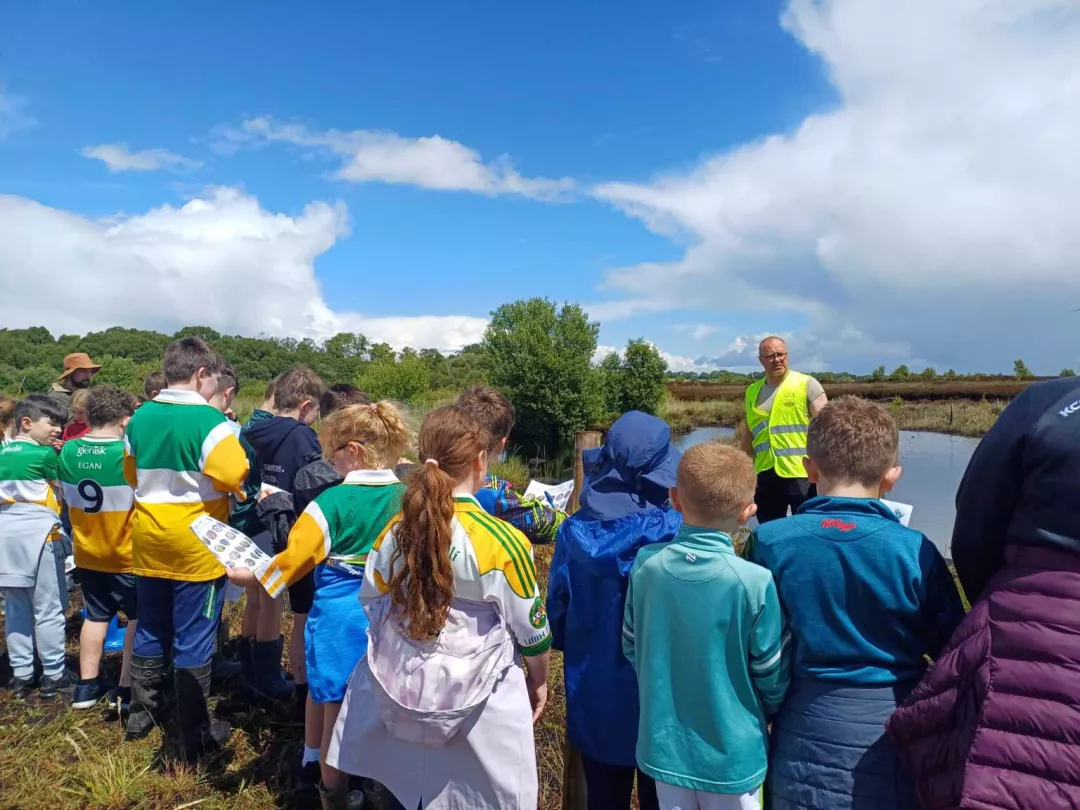General information
RDP Priority
- P4. Ecosystems management
- P5. Resource efficiency and climate
RDP Focus Area
- 4A: Biodiversity restoration, preservation & enhancement
- 4B: Water management
- 4C: Soil erosion & soil management
- 5D: Greenhouse gas & ammonia emissions
- 5E: Carbon conservation & sequestration
RDP Measure
- M16: Cooperation
Beneficiary type
- Operational group
Summary
This two-year pilot project, run by Green Restoration Ireland, set out to find sustainable solutions to reduce carbon dioxide emissions from agricultural peat pastures, which are one of Ireland's most significant sources of greenhouse gases. The project worked with 23 farmers in three counties.
Farm Carbon adopted a three-stage process: baseline participating farm habitats across the key environmental pillars of biodiversity, carbon and water quality; implementing measures to improve environmental performance in these areas for all farm habitats; and measuring the subsequent improvements.
Large areas of on-farm peatland and other habitats were restored, upgraded and/or created as a result of actions undertaken as part of this project.
In addition, Farm Carbon E.I.P. is developing an 'Irish Peatland Community Code' to finance the restoration of degraded Irish peatlands. The project has also instigated Ireland’s first on-farm paludiculture trials to research the most viable crops for the new and sustainable wetland agriculture of the future. It is developing an environmental quality index that integrates the scoring for each of the three environmental pillars to underpin payments that incentivise sustainable land use practices. The research findings will provide policy recommendations for sustainable peat-based agriculture in Ireland.
Results
In terms of climate/environment:
- 170 hectares of peatlands storing c.280 000 tonnes of carbon, emitting 700 – 1 000 tonnes CO2e annually, surveyed.
- Farm Carbon E.I.P. rewetted 20 hectares of peatland, avoided emission of 200 tonnes CO2e annually.
- 2 600 metres of ditch blocked.
- 21 ponds created.
- 680 metres of hedge-laying.
- 770 metres of hedge created.
- One kilometre of hedge repaired and gapped up.
- 120 hedge tree standards planted.
- c.500 cattle removed from waterways.
- Bird survey across 16 farms identified 3 885 birds and recorded 61 species.
- Five bat species recorded across eight farms.
Future economic/societal benefits:
- Demonstration sites showcasing options for paludiculture crops to provide resources for future rural employment.
- Education and awareness-raising (e.g. seminars, social media, webinars, Irish/EU conferences, videos, TV series, radio interviews, awards ceremonies, volunteering days and corporate events) to increase understanding of options for sustainable use of peatland resources, not just intensive agriculture/'wasteland'.
Resources
Documents
Context

Green Restoration Ireland was established to help farmers and landowners diversify income through the restoration of peatlands and other farm habitats.
The Farm Carbon E.I.P. set out to find solutions to reduce estimated emissions of 6–9 million tonnes of CO2 annually from 340 000 hectares of peat grassland – a figure which potentially makes them Ireland’s biggest single source of greenhouse gas emissions. These areas also release an estimated 105 000 tonnes of dissolved organic carbon and around 40 000 tonnes of nitrates, making them significant sources of aquatic pollution.
The Camcor, Little Brosna and Silver River catchments in the counties of Offaly, Laois and north Tipperary in Ireland are at the heart of the 'Just Transition' region which has been heavily impacted by closures in the peat industry. Many former employees are farmers and would benefit from new economic opportunities arising from post-harvest use of peatlands, including new types of agriculture and agricultural products.
Objectives
The main aim of the project was to lessen the environmental impact of peat grasslands by raising the water table to reduce the level of water pollution, halt peat soil subsidence and avoid CO2 emissions. This would also serve to increase the level of water storage in the landscape.
The project was also looking to maximise biodiversity on the involved farms while maintaining and/or enhancing productivity, increasing climate resilience, improving habitats, restoring biodiversity and sequestering carbon in other farm ecosystems. Finding sustainable uses of marginal land that was considered worthless wasteland was also a focus, as was identifying new market opportunities to make the main farm more productive and sustainable, and provide the basis for future rural employment.
Activities

The project began in Autumn 2022 with the creation of biodiversity ponds and a filtration pond. The ponds were installed on drains to intercept sediment and slow water flows. The water table level was raised on several peatland farms, and solar water pumps, pasture pumps and troughs were installed to remove livestock from water courses. Cattle were also excluded from woodland areas.
The following spring, owl and kestrel nest boxes were installed on numerous farms, as were native Irish black bees. Trials in paludiculture (wetland agriculture) with sphagnum mosses and berry crops were carried out, as was a wet multi-species swards (MSS) experiment.
In autumn 2023, part of a rare ancient woodland was coppiced, additional native trees were planted, hedgerows were repaired by laying and gapping up, and hares’ corners created.
There were all activities at specific times. Since 2022, the project has been carrying out soil sampling and laboratory analysis, scientific research, and mapping and data analysis. The farms involved have also hosted several volunteer sessions to help with the restoration of bogs through community events as well as corporate volunteering programmes. One participating farm received an honourable mention for the Herdwatch Biodiversity Farmer of the Year Award in 2023, and several farms were also featured and highlighted as good practice on national television, radio and print media.
High-profile officials were made aware of the project and its activities. Members of the European Parliament (MEPs) visited the project and Farm Carbon E.I.P. was invited to the European Commission to meet other Irish MEPs to discuss rewetting and the EU Nature Restoration Law. The project was also invited to join the EU Carbon Removals Expert Group.
On a more everyday level, farmers shared their experiences and represented the project at several local and national events, workshops, webinars and agricultural shows. A local school was also hosted on a participating farm to raise awareness among future generations, while social media activities and a dedicated monthly newsletter provided ongoing updates on the measures being implemented at farm level.
Main results
First of all, there were benefits to the climate and the environment. As part of the project, 170 hectares of peatlands storing approximately 280 000 tonnes of carbon and emitting 700-1 000 tonnes of CO2 equivalent (CO2e) annually were surveyed. Farm Carbon E.I.P. rewetted 20 hectares of peatland and avoided the emission of 200 tonnes of CO2e annually, 2 600 metres of ditch were blocked, 21 ponds created, 680 metres of hedge laid, 770 metres of hedge created, one kilometre of hedge repaired and gapped up, and 120 hedge tree standards planted. Around 500 cattle were removed from waterways, while the bird survey across 16 farms identified a total of 3 885 birds from 61 species. Five bat species were also recorded across eight farms surveyed.
In terms of future economic and societal benefits, an enormous amount of education and awareness-raising was carried out through seminars, social media, webinars, Irish and EU conferences, videos, a television series, radio interviews, awards ceremonies, volunteering days and corporate events. There were also demonstration sites showcasing options for paludiculture crops to provide resources for future rural employment.
This all helped to increase understanding of the options for the sustainable use of peatland resources, rather than just writing them off as merely for intensive agriculture or even wastelands.
Key lessons
The project undertook Ireland’s first on-farm paludiculture trials, looking into a new type of wetland agriculture to diversify farming options. Overall, a diverse range of measures were trialled and implemented across all farm habitats, resulting in a significant amount of habitat being restored.
In terms of more human benefits, relationships were built between farmers and other partners. Women were actively involved in the project – the nematologist team (studying plant-parasitic nematodes, or roundworms) was entirely female, and the social media and communications manager, and administration, strategy and geographical and information systems officers were all women.
Young people were actively involved, with university student interns working on the farm and carrying out research and sampling for their degrees, master’s qualifications and post-doctorate work.
Contacts
Dr Doug McMillan


